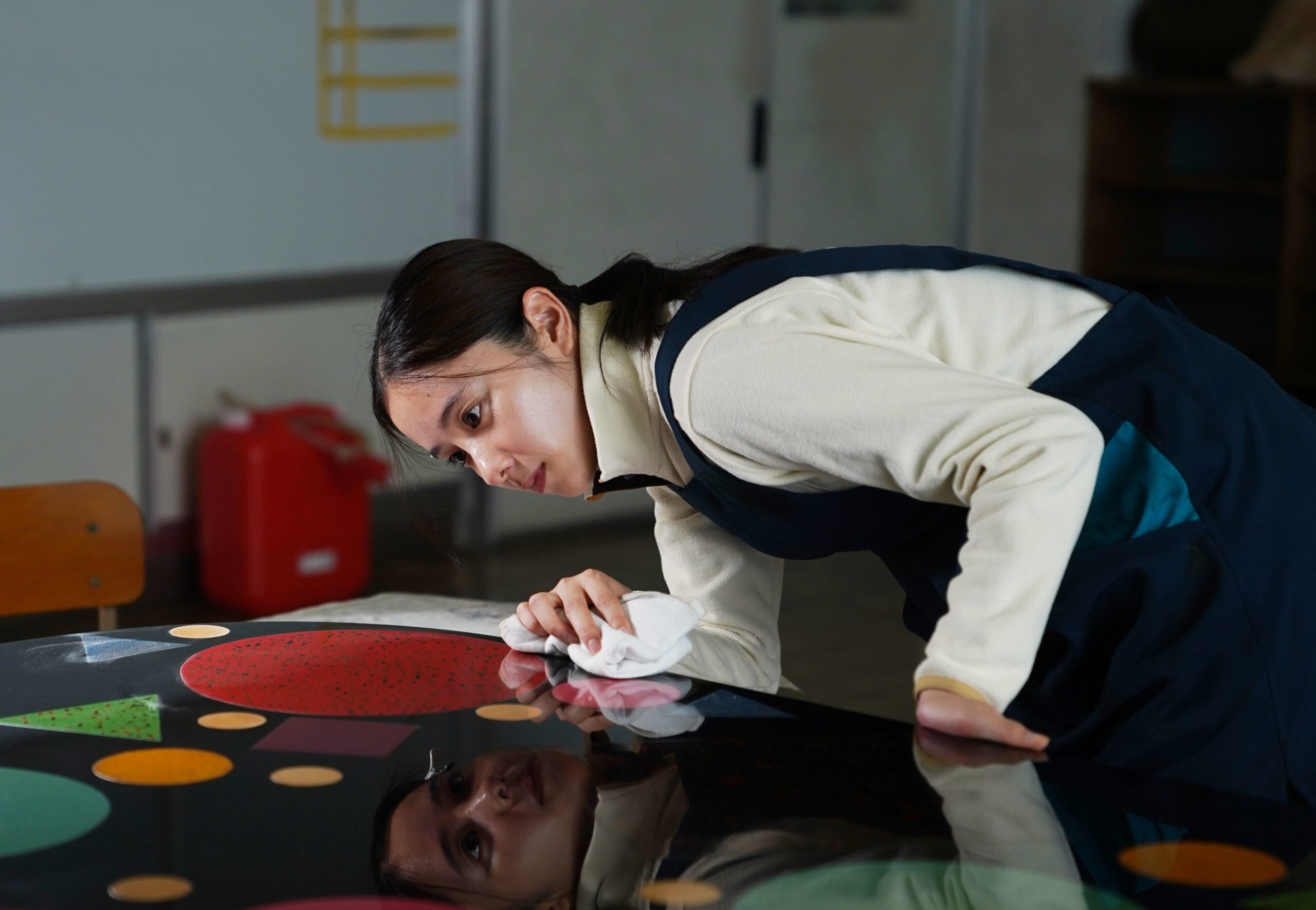
The Japanese Agency for Cultural Affairs (ACA Cinema Project Japan) is always at the forefront of providing increased exposure, development and appreciation of Japanese cinema overseas through screenings, symposiums and other events held throughout the year.
The latest ACA Cinema Project series Family Portrait: Japanese Family in Flux examines the shifting dynamics and struggles of the Japanese household in contemporary cinema. The event, from February 15th until the 24th, screens various feature films, that include premieres and revivals. Amongst the new films that confront the complexities of familial bonds in the face of adversity, there is Keiko Tsuruoka’s Tsugaru Lacquer Girl (Bakanuri no Musume). This picture bestows a glimpse of intergenerational gaps coming to terms with traditions, questioning the values of family within the modern context.
The movie is based on the novel Japan Dignity by Miyuki Takamori. Miyako (Mayu Hotta) is a twenty-three year old daughter who works at a supermarket and occasionally helps her father Seishiro (Kaoru Kobayashi) at his shop. He is dedicated to the traditional tsugaru-nuri lacquerwork that is part of their Aoki family’s legacy. As tradition requires, this father figure expects his son Yu (Ryôta Bandô) — Miyako’s brother — to carry on the family business. But the young man has other plans, he wants to move to London with his boyfriend Naoto (Toshiya Miyata), where same-sex couples can get married and have better perspectives.

Meanwhile, Miyako ardently wants to transform her skill with tsugaru-nuri into a profession. Everyone around her discourages her, since women of her age should be looking for a husband to settle down with kids. In spite of what society demands from Miyako, she embarks upon a passion project that will prove everyone around her that she has the ability to change the customs pertaining to established gender roles, and embrace her dream of working in the lacquerware industry.
Tsugaru Lacquer Girl fondly homages one of Japan’s most traditional arts and asks profound questions about finding a fine tuning between the past and the future. The cast is exceptional in bringing forth three different generational perspectives: the grandparents, who are concerned about giving continuity to their craft; the parents, who adamantly stick to what society expects, the tween children, who are in line with the wider possibilities of the modern world.

Another great protagonist of the film is the setting: Tsugaru city. This was the birthplace of writer Osamu Dazai, who wrote Return to Tsugaru: Travels of a Purple Tramp, and in ancient times the city was notoriously inaccessible. The history of this place shines through the plot of Tsugaru Lacquer Girl: the city seems to be frozen in an archaic mentality and eventually embarks upon a quest for a societal change, serving as springboard for its protagonist.
The cinematography by Wataru Takahashi is hypnotising, especially during the documentary-like sequences of the lacquer technique. We are plunged into the realm of craftsmanship, as we observe the meticulous procedure of tsugaru-nuri. The way Keiko Tsuruoka cinematically narrates this touching story is hypnotising, for the detailed way in which she captures the various artisanal steps of this technique. Small seeds, egg whites, special varnishes coalesce, just as the three generations of the Aoki family, bringing to life a masterpiece.
Final Grade: B+

